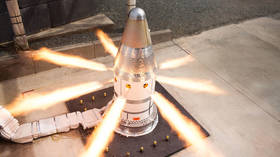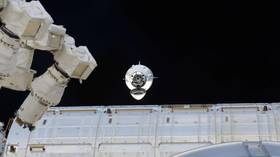NASA exec in charge of Artemis moon mission quits after just 6 weeks, ‘escorted out of HQ’

Mark Sirangelo, who joined NASA less than two months ago as special assistant to agency chief Jim Bridenstine on the Artemis project, has left his post after his proposal for a “sustainable lunar campaign” was nixed by Congress.
Sirangelo “was escorted out of NASA’s headquarters in Washington” after he resigned, according to two sources who spoke to Reuters, “to pursue other opportunities.” Sirangelo joined the agency in April to organize a dedicated “mission directorate” focused on achieving the goals of the Artemis project - up to and including establishing a permanent moon base.
Most importantly - and urgently - Sirangelo was responsible for developing a strategy to meet Vice President Mike Pence’s increasingly implausible 2024 deadline for Americans’ return to the moon - and his departure suggests that NASA still doesn’t have a workable plan in place to get there.
Also on rt.com Artemis: NASA to send first WOMAN to the Moon by 2024 in operation named after Apollo's twin sisterCongress poured cold water on Sirangelo’s proposal for a dedicated Artemis mission directorate earlier this month when it rejected the project’s 2020 budget, citing costs - the $1.6 billion “down payment” is just the tip of an iceberg so large Bridenstine has deliberately avoided estimating the project’s total cost. Lawmakers appear to have seen through that trick, demanding a more detailed plan and some idea of how much it would actually take to get to the moon.
Worse, the White House’s proposal to pay for that $1.6 billion involved repurposing money from the government’s Pell Grant fund, which provides financial aid for low-income college students - not good optics for a program that requires highly-trained engineers and scientists. “We need a lot more rocket scientists, not fewer,” Rep. Kendra Horn (D-Oklahoma), chair of the House subcommittee on space and aeronautics, told the Verge.
With Sirangelo’s plan rejected, NASA will have to conduct its Artemis work under the aegis of the existing Human Exploration and Operations directorate. Details of the plan were released earlier this week, showing 37 launches of NASA and private rockets, a bevy of lunar landers both human and robotic, and finally, “Lunar Surface Asset Deployment” in 2028, presumably a prelude to permanent base operation.
Also on rt.com Bezos unveils Moon lander, space colonization dreams after Trump admin moves up Moon base timelineEarlier this month, Jeff Bezos’ Blue Origin unveiled its own lunar lander. The billionaire has sought to muscle in on NASA’s dominance of the moon-return initiative, even volunteering to invest some of his ample funds to help the struggling agency get off the ground - in return for ensuring his company gets to build the infrastructure future “space colonies” will rely upon.
Think your friends would be interested? Share this story!














